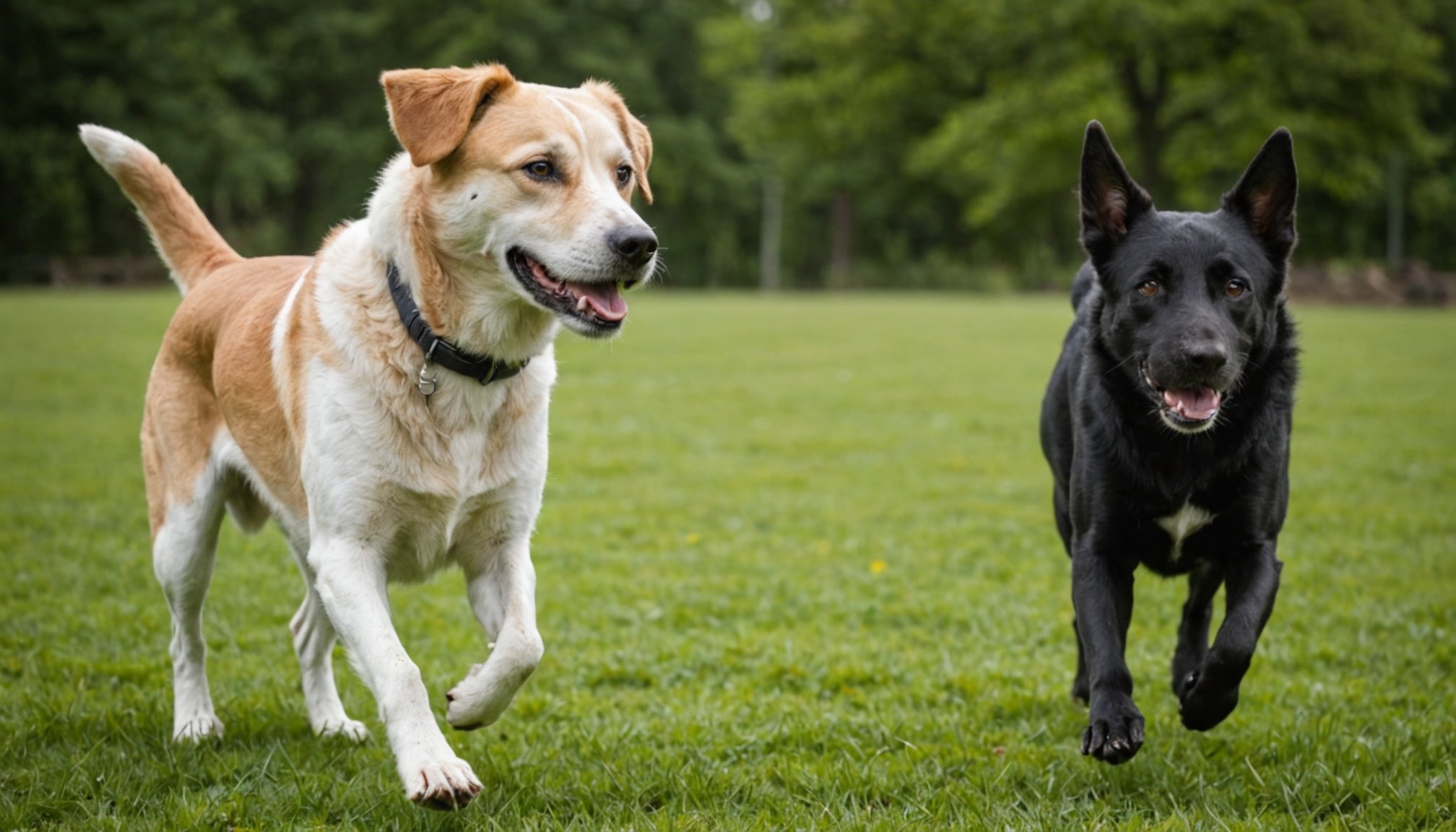Identifying Signs of Overexertion in Dogs
Understanding the signs of overexertion in dogs is crucial to their health and well-being. Overexertion often manifests physically and behaviourally, making vigilance during training essential. Dogs may display common physical signals of fatigue, such as excessive panting, drooling, and a notable decrease in energy or enthusiasm. These symptoms indicate that it’s time to rest.
Behavioural changes can also occur. A typically active dog may become lethargic or irritable, signalling that they are being pushed beyond their limits. Furthermore, some dogs may begin to refuse commands or hesitate where they usually wouldn’t. Recognising these changes during training sessions is vital for any dog owner or handler.
Also to read : Effective Breathing Exercises to Relieve Chronic Bronchitis in Dogs
Understanding breed-specific endurance levels is another significant aspect. Just as athletes in different sports have varying stamina, dogs of different breeds have different endurance thresholds. For instance, a Greyhound may sprint rapidly but needs frequent rests, unlike a Border Collie accustomed to prolonged periods of activity. Recognising and respecting these differences ensures that dogs remain healthy and free from overexertion-related complications. By being attentive to these signs, owners can prevent strain and foster a positive training environment for their canine companions.
Health Risks Associated with Overexertion
Understanding the health risks of overexertion in dogs is crucial for any responsible owner. Overexertion can lead to injuries such as muscle strains, ligament tears, and joint damage. Dogs, especially those pushed beyond their endurance thresholds, are susceptible to these injuries, which might require prolonged recovery periods.
Also to see : Best Methods to Ease Your Dog’s Firework Anxiety: Discover Proven Calming Solutions
Long-term health effects of consistent overtraining can be particularly detrimental. Chronic fatigue and weakened immune systems are common among dogs who are frequently overworked. This chronic state can result in increased susceptibility to infections and illnesses, significantly impacting a dog’s quality of life.
Recognising early signs of these health issues is critical. For instance, if a dog displays reluctance to participate in usual activities or limps after exercise, it may indicate overexertion. Paying attention to these cues allows for timely intervention, preventing more severe health challenges.
Veterinarians stress the importance of monitoring activity levels and ensuring dogs receive adequate rest. Recognising early signals allows adjustments to training routines, ensuring a healthy balance between activity and rest. Owners should take proactive steps, seeking veterinary advice to tailor training regimens to each dog’s specific needs and quirks, promoting positive and safe exercise environments.
Practical Tips for Monitoring Dogs During Training
Monitoring dog training is vital for maintaining the health and safety of our canine friends. It helps in identifying signs of fatigue early and allows timely interventions. Implementing structured routines ensures that your training sessions are beneficial and not detrimental.
Establishing a Training Routine
Establishing a routine involves setting consistent times for training sessions. This helps your dog predict activities and prepares them mentally and physically. Start with short sessions, progressively increasing the duration as your dog’s stamina builds. Consistency enhances performance without overwhelming your dog.
Recognizing Signs of Distress
Watch for signs like excessive panting, limping, or hesitation. These are indicators that your dog might be in distress. Each dog has distinct tolerance levels, so be observant of their behaviour. Immediate attention to these signs prevents potential health complications.
Using Timing and Breaks Effectively
Timing is crucial in monitoring dog training. Use short, effective intervals, followed by breaks. Incorporate rest periods to allow recovery and prevent overexertion. These breaks are opportunities for hydration and relaxation. Efficient use of time enhances focus and ensures a productive training session.
Safe Training Practices
Implementing safe dog training practices is essential for ensuring your canine’s well-being. Understanding the importance of a balanced training regimen helps prevent overexertion and maintains a healthy lifestyle for your pet.
Guidelines for a Balanced Training Regimen
- Begin with short, focused sessions and gradually increase as your dog builds stamina.
- Observe your dog’s response and adjust intensity appropriately.
- Incorporate varied activities to engage different muscle groups and mental faculties.
Strategies for Safe Conditioning
Conditioning practices should focus on building endurance gradually. Encourage participation in gentle exercises that promote flexibility and strength. For puppies and older dogs, low-impact activities prevent unnecessary strain on developing or aging joints.
Importance of Hydration and Environmental Considerations
Hydration is crucial during training sessions. Always provide access to water before, during, and post-activity to prevent dehydration. Environment plays a significant role; avoid training in extreme heat to minimise heat-related stress. Aim for shaded or indoor areas in adverse weather conditions to ensure a comfortable experience for your dog. Recognising these factors can significantly enhance the safety and enjoyment of training, paving the way for a healthier and happier canine companion.
Expert Insights on Canine Overexertion
Veterinarian insights on dog training provide invaluable guidance for developing healthy routines. Veterinarians stress the importance of tailoring training duration to individual dogs. For instance, younger or smaller breeds often require shorter sessions, while larger or working breeds can handle longer intervals. Veterinarians recommend starting with 15-30 minute sessions, adjusted based on the dog’s age, size, and health.
Real-life case studies amplify the necessity of customising training. A Golden Retriever may enjoy extended activities, showcasing boredom when under-stimulated, whereas a Pug may become exhausted with similar exertion. Such insights highlight the variability in breed-specific endurance.
Routine health check-ups also play a pivotal role. Veterinarians advise completing assessments before establishing training regimens. Routine exams uncover underlying conditions, ensuring no hidden health risks are present. By assessing a dog’s medical history and current health status, owners can better understand their pet’s capabilities.
Regular monitoring during exercises, informed by veterinary expertise, ensures responsible dog ownership. Recognising each breed’s distinctive requirements leads to a healthier, more enjoyable training experience for both pet and owner. This approach, rooted in veterinarian insights, promotes a balanced and sustainable training lifestyle.








